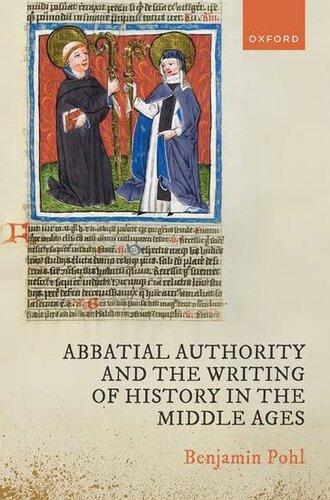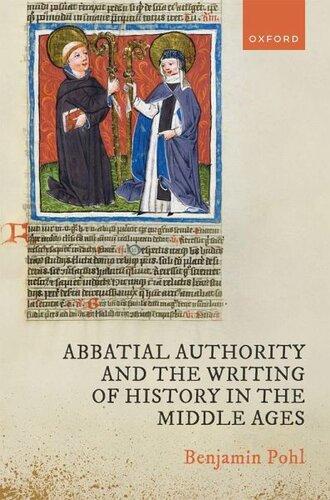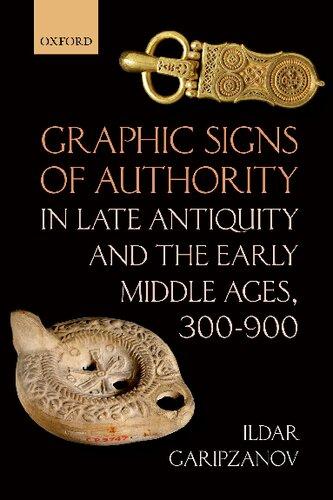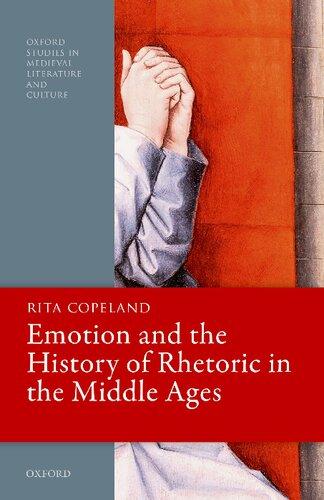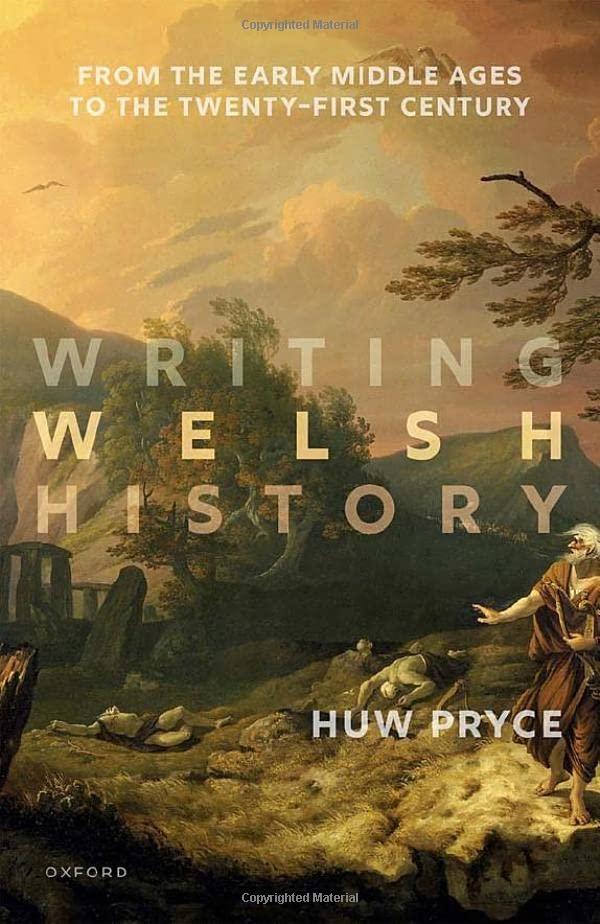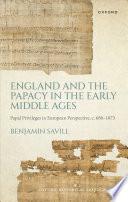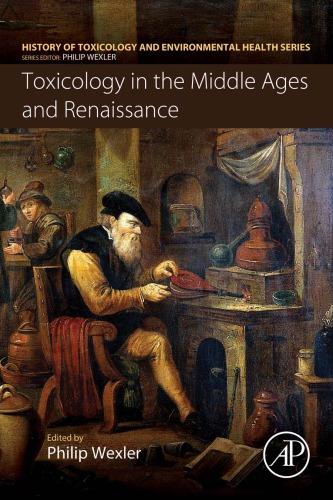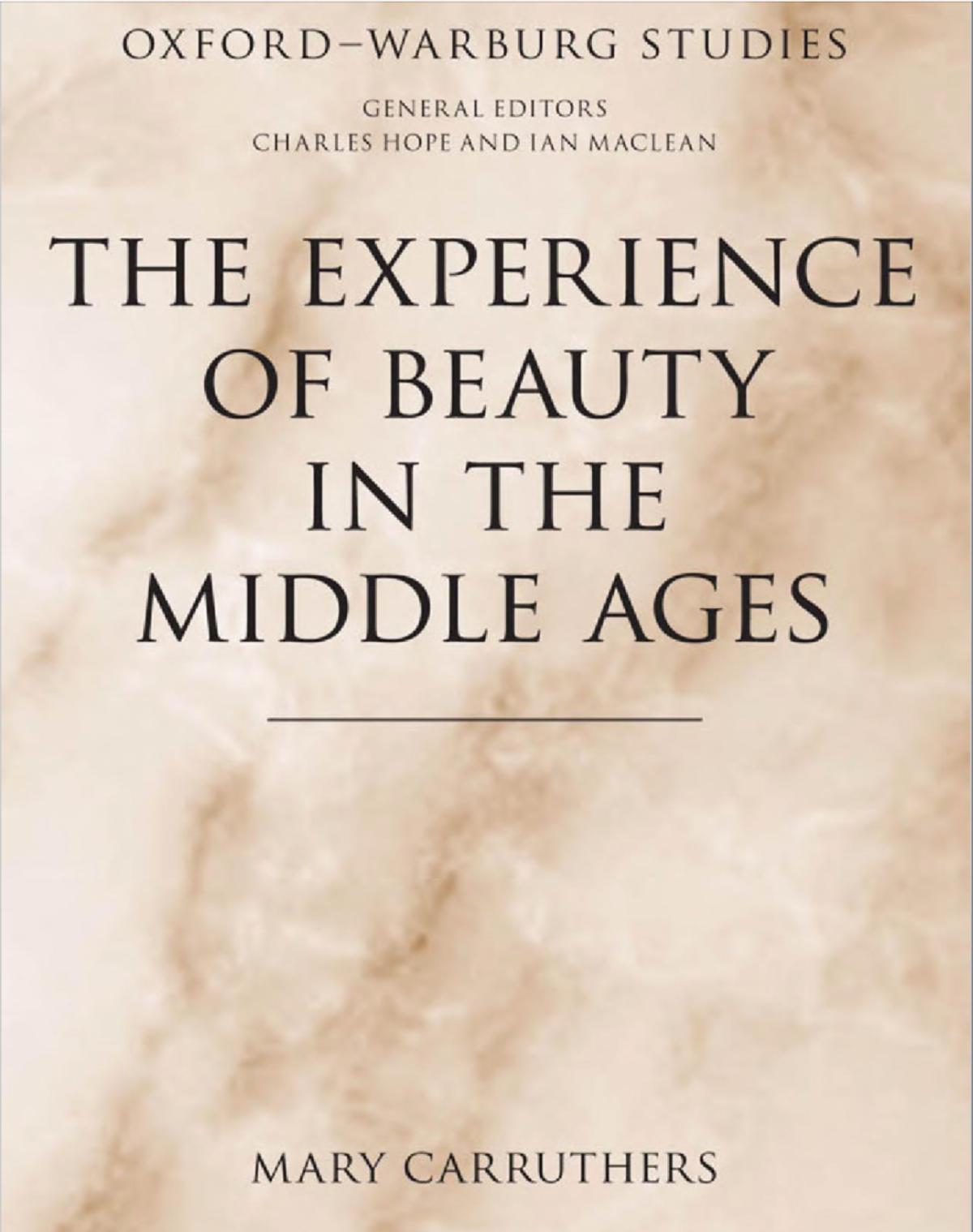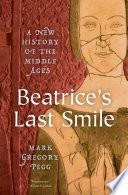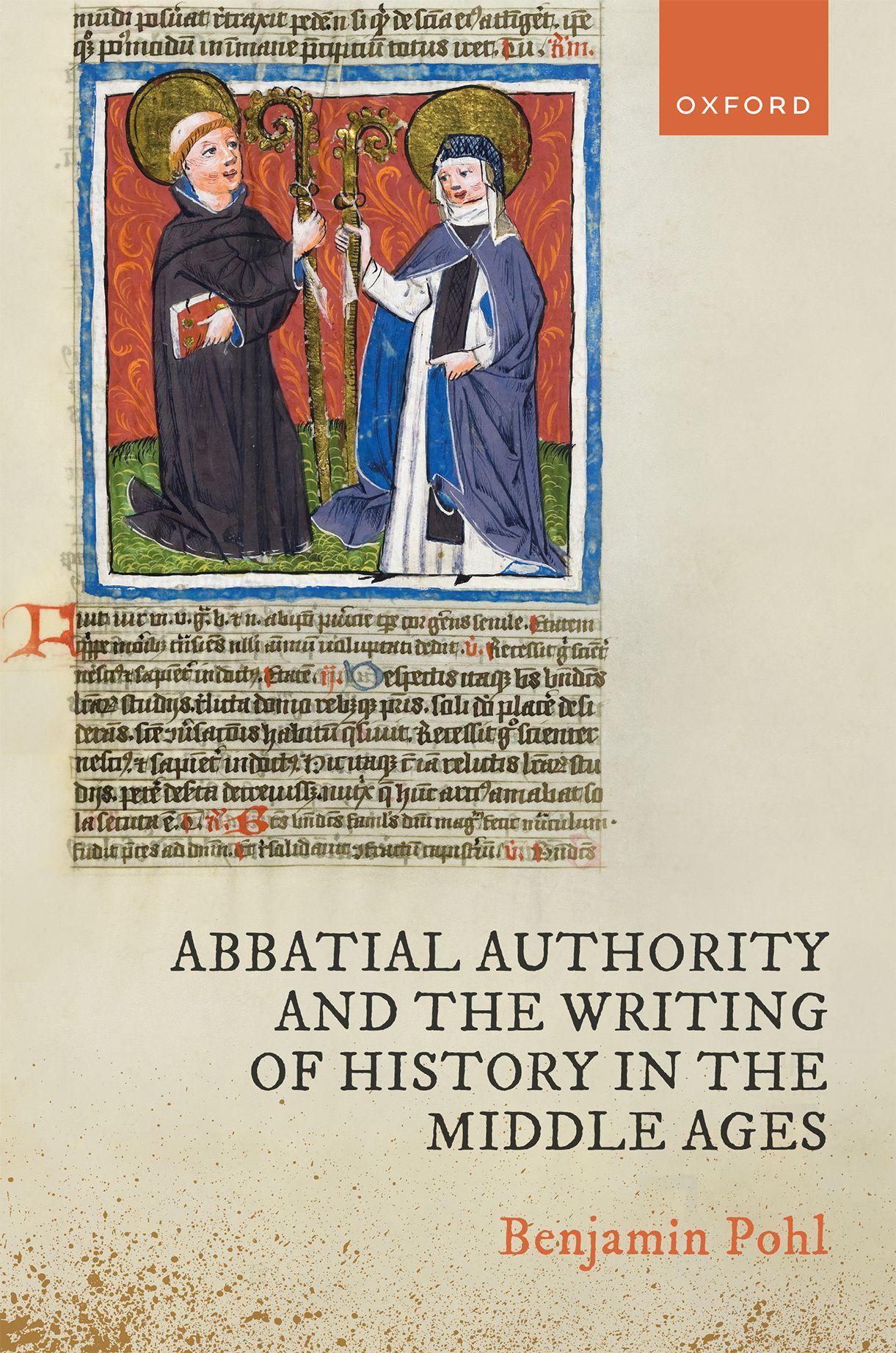ListofFigures
CoverimageKarlsruhe,BadischeLandesbibliothek,Cod.Lichtenthal20, fol.184r,reproducedwithpermission.
1.1HildegardofBingen/Rupertsbergandher amanuensis,Volmar. Heidelberg,Universitätsbibliothek,MSCod.Sal.X.16,fol.3v,reproduced underCreativeCommonslicenceCCBY-SA4.0.34
1.2aMiniaturedepictingJerome.Avranches,Bibliothèquepatrimoniale, MS159,fol.4r,reproducedwithpermission.35
1.2bMiniaturedepictingEusebius.Avranches,Bibliothèquepatrimoniale, MS159,fol.7v,reproducedwithpermission.35
1.2cMiniaturedepictingRobertofTorigniandhispersonalscribe,Adam(?). Avranches,Bibliothèquepatrimoniale,MS159,fol.70r,reproduced withpermission.36
1.2dMiniaturedepictingRobertofTorigniandHenryofHuntingdon. Avranches,Bibliothèquepatrimoniale,MS159,fol.174v, reproducedwithpermission.36
1.3StephenofSaint-Airyandhisscribe.Verdun,Bibliothèqued’étude duGrandVerdun,MS8,fol.1v©CAGV,allrightsreserved, reproducedwithpermission.38
1.4aRupertofDeutzandhisscribalassistant.Munich,Bayerische Staatsbibliothek,MSClm.14355,fol.1r,reproducedunderCreative CommonslicenceCCBY-NC-SA4.0.40
1.4bRupertofDeutzasscribe.Munich,BayerischeStaatsbibliothek,MS Clm.14355,fol.1v,reproducedunderCreativeCommonslicence CCBY-NC-SA4.0.41
1.5HughofFlavigny’ s ‘anti-dedicatory’ poem.Berlin,Staatsbibliothekzu Berlin–PreußischerKulturbesitz,MSPhill.1870,fol.7r,publicdomain, reproducedwithpermissioninaccordancewiththeGermanCopyright Act(UrhG).55
2.1LeonasofCasauriaandPopeAdrianIV.Paris,Bibliothèquenationale deFrance,MSLat.5411,fol.253r,reproducedwithpermission.99
2.2AlandeNesseholdingabook.Oxford,BodleianLibrary,MSBodley39, fol.169r,reproducedunderCreativeCommonslicenceCCBY-NC4.0.111
2.3WilliamofTournaiwritinginhisbed.Paris,InstitutdeFrance–BibliothèqueMazarine,MS753,fol.ix,reproducedunderCreative CommonslicenceCCBY-NC3.0.117
2.4The ‘Sturmius-pillar’ inthecryptofStMichael’sChurch,Fulda. Michaelskirche–BistumFulda,reproducedwithpermission.158
2.5EigilofFulda’s(empty)graveinthecryptofStMichael’sChurch, Fulda.Michaelskirche–BistumFulda,reproducedwithpermission.159
2.6AndreasLang’sportraitinthe Fasciculusabbatum.Bamberg, Staatsbibliothek,MSRB.Msc.49,fol.54v,photo:GeraldRaab,reproduced underCreativeCommonslicenceCCBY-SA4.0.164
3.1DesideriusofMontecassinoandhisbooks.Vatican,BibliotecaApostolica Vaticana,MSVat.lat.1202,fol.2r,reproducedwithpermission.191
3.2aBertholdofWeingarten’sbooklist.Stuttgart,Württembergische Landesbibliothek,MSHBI240,fol.43r,publicdomain,reproduced withpermissioninaccordancewiththeGermanCopyrightAct(UrhG).197
3.2bBertholdofWeingarten’ s gesta.Stuttgart,Württembergische Landesbibliothek,MSHBI240,fol.44r,publicdomain,reproduced withpermissioninaccordancewiththeGermanCopyrightAct(UrhG).198
3.3WarinofStAlbansandhisbooks.London,BritishLibrary,MSCotton ClaudiusEIV,fol.125v©BritishLibraryBoard02/02/2023,reproduced withpermission.202
3.4PaulofCaenandhisbooks.London,BritishLibrary,MSCottonNero DVII,fol.13v©BritishLibraryBoard02/02/2023,reproducedwith permission.203
3.5RobertdeLindseypresentingthe PeterboroughPsalter.Cambridge, FitzwilliamMuseum,MS12,fol.139v©TheFitzwilliamMuseum, Cambridge,reproducedwithpermission.205
3.6HitdaofMeschedepresentingthe HitdaCodex.Darmstadt,UniversitätsundLandesbibliothek,MS1640,fol.6r,reproducedunderCreative CommonslicenceCC0.207
3.7KunigundeofPrague,hernuns,andhertwoscribes,ColdaandBeneš Prague,NationalLibraryoftheCzechRepublic,MSXIVA17,fol.1v, reproducedwithpermission.209
3.8FrowinofEngelbergandhisscribe,Richene.Engelberg,Stiftsbibliothek, MSCod.5,fol.1r,reproducedwithpermission.213
3.9aReinher’sinventoryinthe Fasciculusabbatum.Bamberg,Staatsbibliothek, MSRB.Msc.49,fol.57r,photo:GeraldRaab,reproducedunderCreative CommonslicenceCCBY-SA4.0.214
3.9bNonnosus’sinventoryinthe Fasciculusabbatum.Bamberg,Staatsbibliothek, MSRB.Msc.49,fol.57v,photo:GeraldRaab,reproducedunderCreative CommonslicenceCCBY-SA4.0.215
3.10FaritiusofAbingdonholdingabook.London,BritishLibrary,MSCotton ClaudiusCIX,fol.144r©BritishLibraryBoard02/02/2023,reproduced withpermission.224
4.1Nineteenth-centuryportraitofRobertofTorigniinhisprivatestudy. ÉdouarddeBergevin,1889,publicdomain(outofcopyright).254
4.2WibaldofCorvey’s(?)writingdesk.Berlin,StaatsbibliothekzuBerlin–PreußischerKulturbesitz,MSlat.fol.252,fol.1v,publicdomain, reproducedwithpermissioninaccordancewiththeGermanCopyright Act(UrhG).275
4.3AnsbertofSaint-Wandrilleandhisbookchest.LeHavre,Bibliothèque municipaleArmandSalacrou,MS332,fol.41v,reproducedwithpermission.294
4.4SimonofStAlbansandhisbookchest.London,BritishLibrary,MS CottonClaudiusEIV,fol.124r©BritishLibraryBoard02/02/2023, reproducedwithpermission.295
4.5HamelinofGloucester(?)receivingacharterfromKingHenryII.Kew, NationalArchives,C150/1,stampedfol.18©TheNationalArchives, reproducedwithpermission.308
Permissionswereobtainedfromtherelevantcopyrightholdersunderthe licensingtermsindicatedabove.
Introduction
From11–13June1480,theAbbeyofSSPeterandPaulinErfurtplayedhosttothe GeneralChapteroftheBursfeldeCongregation,aconfederationofreformed Benedictinemonasteriesfoundedintheearly fifteenthcenturyandnamedafter BursfeldeAbbeyinpresent-dayLowerSaxony.¹Twenty-sevenheadsofhousehad travelledtoErfurtattheinvitationofTheodericofHomborch,Bursfelde’sthen abbot(1469–85)andpresidentoftheCongregation,withtwenty-threesending deputiesorapologies.²Aswascustomary,Masswascelebratedbythosein attendanceandahomilydeliveredbythehost,GuntherofNordhausen,Erfurt’ s rulingabbot(1458–1501).³ThesubjectchosenbyGuntherwasonethatcouldbe expectedtorufflesomefeathersamongsthispeers.Provisionallytitled Dehistoria sermoclaustralis,thehomilywascommittedtowritinginJanuary1481withthe moreprogrammatictitle Dehistoriaestudioetutilitate,anditistothiswritten versionmadeforpublicationandcirculationthatweoweourknowledgeofthis importanttexttoday.⁴ Judgingfrom Dehistoriae,Guntherbeganhisverbal addresswithanelaborateparable:hewhocompareshistorywiththesun(‘historiamcumsolecomparaverit’)will findthatjustasthesuninvigoratesalllifeon Earth,historyunderpinstheentiremonasticlifestyle(‘historiavitam, fidem, auctoritatemetstabilimentumdonatomnibusrebusinvitacommuni’).Thereis
¹PiusEngelbert, ‘DieBursfelderKongregation:WerdenundUntergangeinerbenediktinischen Reformbewegung’,in 925JahreKlosterBursfelde–40JahreGeistlichesZentrumKlosterBursfelde,ed.by RüdigerKrauseandThomasKaufmann(Göttingen:Wallstein,2020),pp.83–101;WalterZiegler, ‘Die BursfelderKongregation’,in DieReformverbändeundKongregationenderBenediktinerimdeutschen Sprachraum,ed.byUlrichFaustandFranzQuartal(StOttilien:Eos,1999),pp.315–407.Onthe GeneralChapter,seePaulusVolk, DieGeneralkapitelderBursfelderBenediktiner-Kongregation (Münster:Aschendorff,1928).
²TheGeneralChapterconvenedatErfurtonovertwentyoccasions,secondonlytoBursfeldeitself; seeZiegler, ‘Kongregation’,pp.367–72;MatthiasEifler, DieBibliothekdesErfurterPetersklostersim spätenMittelalter:BuchkulturundLiteraturrezeptionimKontextderBursfelderKlosterreform,2vols. (Cologne:Böhlau,2017),I,96–7.
³TheChapter’sprocedureissetoutinPaulusVolk, DieGeneralkapitels-RezessederBursfelder Kongregation,Vol.I: 1458–1530 (Siegburg:Respublica,1955),pp.186–90.
⁴ EditedinBarbaraFrank, DasErfurterPetersklosterim15.Jahrhundert (Göttingen:Vandenhoeck andRuprecht,1973),pp.382–7[hereafter Dehistoriae];Frank’sviewofthistextasanearlydraftofa speechintendedfordeliveryattheGeneralChapterof1485isunconvincing,and Dehistoriae almost certainlyrepresentsanauthorialrevisionofthe1480homilymadefordissemination.Gunther’ s autographislost,andthesolecopy(Melk,Stiftsbibliothek,MS20,pp.207–13)producedby OliverLegipontintheearlyeighteenthcenturyisprintedin AntiquitatesBursfeldenses,ed.by JohannG.Leuckfeld(Leipzig:Freytag,1713),pp.183–90;Leuckfeld’stranscriptioncontains manyerrors,however,someofwhicharerepeatedbyFrank,whichiswhycitationshereafterwill refer,inthe firstinstance,toLegipont’smanuscript.
AbbatialAuthorityandtheWritingofHistoryintheMiddleAges.BenjaminPohl,OxfordUniversityPress. ©BenjaminPohl2023.DOI:10.1093/oso/9780198795377.003.0001
2
nolightwithoutthesun,andnocommunitywithouthistory.Withouthistory, manisnotmanandmonksarenotmonks(‘Sinehistoriahomononesthomo. Sineeanonsumusmonachi’).⁵ Movingontoaddresshisaudiencedirectly, Guntherexpressesgreatastonishment ‘thatthestudyofhistory[...]shouldbe treatedsouncaringly,poorly,andimproperly ifindeeditistreatedatall inour cloisters’ . ⁶ Torectifythesituation,a ‘doctushistoriarummagister’ shouldbe appointedineverymonasteryfortheinstructionofitsmonks,eventhemost seniorofwhom(‘seniores’)arebutchildren(‘infantessunt’)intheirhistorical studies.⁷ Theterm ‘seniores’ herereferstobothadvancedageandseniorityof office,theinsinuationbeingthateventhehighest-rankingindividualsinthese monasteries theabbots wereoftenveryignorantofthepast(‘omniumrerum antiquarumignorantissimi’). ‘Iwasbaffled’,Gunthercontinues, ‘thatwhenIasked theabbotsofourorderabouttheirpredecessorsandthefoundersoftheir monasteries(‘defundatoribusetantecessoribusmonasteriorumsuorum ’), Iwould findthemdumbstrucklike fish(‘magismutosdeprehendiquampisces’) withnothingtorespond(‘[n]ihilenim,planenihilresponderesciebant’)’ ⁸ Asfar asGuntherwasconcerned,knowledgeofthepastwasamoralimperative,⁹ and ignoranceofitinexcusableinamonasticsuperior.Reiteratinghisearlierpoint abouthistory ’scentralitytothemonasticenterprise,hecautionshisaudienceto shunthisdreadfulmonster(‘monstrumhorrendum’),¹⁰ whoselackofhistorical knowledgemakeshimthebeastliestofbeasts(‘bestiabestialiorerit’),¹¹andwhois thereforeunfittogovernareligiouscommunitywithauthority. Therelationshipbetweenabbatialauthorityandthewritingofhistory portrayedwithgreatconvictionandpathosin Dehistoriae isthesubjectofthis
⁵ MSMelk20,pp.207–8and211; Dehistoriae,ed.Frank,pp.382–3and385.
⁶ MSMelk20,p.208: ‘Quodcumitasit,mirorsanedemirorque,religiosisacraecongregationis patres,studiumhistoricum,sinequonullussolideerudiripotest,adeofrigide,ieiuneetinepte si tractetur inmonasteriisnostrispassimtractari’ ; Dehistoriae,ed.Frank,p.383.
⁷ MSMelk20,p.208; Dehistoriae,ed.Frank,p.383.
⁸ MSMelk20,p.208; Dehistoriae,ed.Frank,p.383.
⁹ Onthismoralimperative,cf.SigbjørnO.Sønnesyn, WilliamofMalmesburyandtheEthicsof History (Woodbridge:Boydell,2012);GeorgiaHenley, ‘GeoffreyofMonmouthandtheConventionsof HistoryWritinginEarly12th-CenturyEngland’,in ACompaniontoGeoffreyofMonmouth,ed.by GeorgiaHenleyandJoshuaB.Smith(Leiden:Brill,2020),pp.291–314(p.296).
¹
⁰ MSMelk20,p.208: ‘Fugiteposthacmonstrumistudhorrendum,cuilumenrationisademptum, ignorantiamscilicethistoriarum’ ; Dehistoriae,ed.Frank,p.383.
¹¹MSMelk20,p.212; Dehistoriae,ed.Frank,p.386.Guntherwasnotthe firsttodescribehumans ignorantofthepastasirrationalbeasts.Inhis HistoriaAnglorum,HenryofHuntingdonhadsimilarly distinguishedrationalcreatures(‘rationabiles’)frombrutes(‘brutis’)onthebasisthatthelatter,bethey humans(‘homines’)orbeasts(‘animalia’),refusetolearnaboutthepast; HenryofHuntingdon:Historia Anglorum–TheHistoryoftheEnglishPeople,ed./tr.byDianaE.Greenway(Oxford:OxfordUniversity Press,1996),pp.4–5.Forfurtherexamples,seeAntoniaGransden, ‘ProloguesintheHistoriographyof Twelfth-CenturyEngland’,in EnglandintheTwelfthCentury,ed.byDanielWilliams(Woodbridge: Boydell,1990),pp.55–81;MatthewKempshall, RhetoricandtheWritingofHistory,400–1500 (Manchester:ManchesterUniversityPress,2011),pp.260–1.Onboundariesbetweenhumansand animalsinmedievalthought,seeIanP.Wei, ThinkingaboutAnimalsinThirteenth-CenturyParis: TheologiansontheBoundarybetweenHumansandAnimals (Cambridge:CambridgeUniversityPress, 2020).
book,anddwellingonGunther’sarguments andtheirreceptionamongst contemporaries alittlelongerservestointroducethevariouslinesofenquiry Iwillbepursuinginandacrossitsindividualchapters.Tobeginwith,thereisthe expectationthatnomonasticcommunity,whetherlargeorsmall,shouldbe exemptfromthedutytorecorditshistoryinwriting.Thereasonforthis,we aretold,isthateventhelowliestandmostobscurehouse(‘vilissimumetobscurissimumomnium ’)hasastoryworthpreservingforposterity.Whowerethe founders,whatweretheirintentions,andwhatdidtheygive?Whowerethe abbotsandabbesses,howlongdidtheyholdtheoffice,andwhatgoodandbad thingsdidtheydo?Howdidthecommunity’sfortuneswaxandwaneundertheir abbatialleadership?¹²These,Guntherexplains,arequestions every monastic superiormustbeabletoanswer,andfailuretodosoconstitutesaviolationof abbatialleadershipanddutyofcare.
AstrikinglysimilarexpectationwasvoicedsomethirtyyearsearlierbySophia ofStolberg(fl. 1451),abbessofHelftaandauthorofhercommunity ’ s Libellusde fundatione.Inaletteraddressedtoherpeer,theabbotofHalberstadt,Sophia reminds andperhapsimplicitlyreprimands hercorrespondentthatitwouldbe absurdnottoknowthehistoryofone’sownmonasteryandthenamesofthose throughwhosepiousdeedsanddonationsitwaspermittedtothriveinthisworld (‘valdeabsurdumessetignorareeos,perquosadtalemproventumfelicitatem pervenimus’),whichiswhySophialedbyexampleandspentdayandnight(‘die noctuque’)gatheringsourcesfromnearandfar(‘dediversismundipartibusin unumcollecti’)towriteherhistoryoftheabbey’sfoundationanditsbenefactors (‘disposuiscriberelibellum[...]primodeinchoationeclaustrinostri[et]nomina acgenusfundatorumnostrorum’)fortheeducationofitspresentandfuture inhabitants(‘[a]dprofectumetutilitatemtampresentiumquamfuturorum’).¹³ WhetherSophia’swordsweremeantprimarilytojustifyherownhistoriographicalactivityorapplysomepeer-pressureonHalberstadt’sabbottodothesamefor hiscommunity,noteverymonasticsuperiorwouldhavebeeninapositionto followherexampleandmeetthesehighexpectations,subsequentlyreiteratedby Gunther,evenifhe/shewerethusinclined.
Infact,thereisevidencethatGunther’semphaticappealtothe1480General Chapterwasmetwithsomereservationonthepartofhisaudience.Thesubjectof
¹²MSMelk20,p.210; Dehistoriae,ed.Frank,pp.384–5: ‘Annonfundatoremseufundatricem habuit?Quisvelquaenamilleseuilla?Quaefamilia,vitaetintentioutriusquefuit?Quaeetquanta donatioclaustri?Quaeprivilegia?Quaeseriesetsuccessiopraelatorumseupraelatarum?Quamdiu sedit?Quidquisveseuquaevebenevelmaleegit?Quomododesaeculoinsaeculummonasteriumcrevit etdecrevit?Exquibusoccasionibusetcircumstantiis?’ .
¹³Hanover,NiedersächsischesLandesarchiv,Dep.76,C113;editedin UrkundenbuchderKlöster derGrafschaftMansfeld,ed.byMaxKrühne(Halle:Hendel,1888),pp.223–6(p.223)(=no.148);also cf.HansPatze, ‘KlostergründungundKlosterchronik’ , BlätterfürdeutscheLandesgeschichte 113 (1977),89–121,repr.in AusgewählteAufsätzevonHansPatze,ed.byPeterJohaneketal.(Stuttgart: Thorbecke,2002),pp.251–84(p.278);CharlotteWoodford, NunsasHistoriansinEarlyModern Germany (Oxford:OxfordUniversityPress,2002),pp.185–6.
4
theabbots’ scepticismandGunther’sresponsetoitarebothreflectedin De historiae,whichincludesashortdialoguethatmaywellresembletheheated conversationsthathadensuedfollowing orevenduring thehomily’sdelivery:
Yousay:whereisanabbotsupposed findtimeforthis[thewritingofhistory] whenhemusttakecareof[themonastery’s]sacredandeconomicbusiness?[To thisI,Gunther,respond:]Ifindeedhecannot ordoesnotwantto undertake thisworkpersonally,istherenotsomeoneelsesuitablewithinthemonasteryto whomhecandelegateitbyappointment?Andifthereisnone,therewillbe someoneelsewherewhocouldbeapproachedtoexecutetheworkwell.¹⁴
Themessageisclear:theapprehensionsofhispeersnotwithstanding,Gunther insiststhattheresponsibilityforthewritingofhistoryinsideamonasterylies ultimatelywiththeabbot,whocannotrenderhiscommunityagreaterservice thanthroughhistoricaleducation,therewardofwhichoutweighsallthesilverand goldinthisworld(‘necaurovelargentocomparandum’).¹⁵ Whatcouldbemore advantageous,therefore,thaniftheGeneralChapterweretopassastatute (‘statutum’)obligingeveryabbottotakepersonalresponsibilityforcommitting hismonastery’shistorytowriting(‘utquilibetpraelatusdeconscribendisannalibusvelhistoriamonasteriisuisollicitusessedebeat’)?Betterstill,whatifthepope weretoissueamandate(‘universalemandatum’)compellingallmonasteriesand bishopricstodemonstratethesamezeal(‘studium’)andcare(‘ curam ’)incompilingitsdomesticannals(‘colligendisannalibussuis’)?Perhapstheemperor wouldconsideraddingasimilarcommand(‘suumadderetpraeceptum’)and obligehismagnatestoimitatetheirecclesiasticalcounterpartsbypromotingthe writingofhistoryintheirsecularterritories(‘quisqueinsuoterritorio’)?¹⁶ This remainedwishfulthinking.Nopopeoremperorissuedadecreeformallyprescribingthewritingofhistory,nordidtheCongregationrespondtoGunther’ s ferventcalltoactionwithofficiallegislation.Thequestion,however,iswhetherhis argumentsconcerningtheabbot’sprincipalroleinthewritingofhistorywereso unrealisticastobedismissedoutofhand,orwhethertheywereinformed,atleast partially,byhistoricalprecedentandpractice.Wealreadysawoneprecedentin the LibellusdefundationemonasteriiinHelfta writtenbySophiaofStolbergthirty
¹⁴ MSMelk20,p.209: ‘Dicis:Undeotiumabbati,quicuramdebethaberereisacraeetoeconomicae? Licetipsenecvelitnecpossithunclaboreminsesuscipere,acnoninconventuidoneusaliquis,quem adhocopusdeligereetconstituterevaleat?Atdesit,aliundepetenduseritquibonumopusperficiat’ ; De historiae,ed.Frank,p.384.
¹⁵ MSMelk20,pp.208–9: ‘Curateigitur,sacraecongregationisantistites,uthocstudium[...]in scholisnostrisvigeat, floreat,crescatfructusqueferatmortalietperennivitadignos[...]Nemopoterit certiusetiustiusadmirariprovidentiamDivinaminregendanaviculaecclesiae,suaequamhocmodo, sioriginesetprogressumcuiuslibetinparticulariattentiuslegat’ ; Dehistoriae,ed.Frank,pp.383–4.
¹⁶ MSMelk20,p.209; Dehistoriae,ed.Frank,p.384.ItisnotimplausiblethatGunther’ssuggestion tookitsinspirationfromtheprecedentofCharlemagne’sfamous Epistoladelitteriscolendis.
yearspriortothepublicationof Dehistoriae,butjusthowfarcanwetracethis traditionofabbotsandabbessesactingastheircommunities’ historians,andjust howwidespreadwasit?
In1496,sixteenyearsafterGuntherhaddeliveredhishomilyatErfurt,the BursfeldeGeneralChapteragainprovidedaplatformforasimilarappeal.The speakerdesignatedtoaddresstheprelatesgatheredatReinhardsbrunnwas JohannesTrithemius,thenabbotofSponheim(1483–1506),thoughhiswords werereadout inabsentia byhiscolleague,AndreasLang,abbotofMichelsbergin Bamberg(1483–1502).¹⁷ SponheimandBamberghadjoinedtheBursfelde Congregationin1417and1467,respectively,andtheirrepresentativesclaimed considerableauthorityinitsassemblies.¹⁸ Trithemiususedthisauthoritytorevive Gunther’scauseandreprimandhisfellowabbotsforhavingallowedthestandard ofliteracyandscribalexpertisetodeclinedramaticallywithintheircommunities, tothedetrimentofhistoriography.¹ ⁹ ThiswasnotanewgripeforTrithemius,who justafewyearsbeforehadpublishedatreatiseinpraiseofmonasticscribes.²⁰ At Reinhardsbrunn,hedoubleddownonhisargumentsbyreproachinghispeersfor neglectingnotonlytheirowneducation,butalso,andworsestill,thatoftheir monks(‘quodgravisest,monachissuisstudiumlegendiinterdicunt’).²¹Quickto nameandshame,TrithemiussingledouttheabbotsofHirsauforhavingdisregardedtheircommunity’slonghistoriographicaltraditioneversincethefateful regimeofWigand(1369–80).Unlikehispredecessors who,asdiscussedlaterin thisbook,hadchampionedthewritingofhistoryandoccasionallyevenservedas scribesthemselves Wigandissaidtohavemisledhismonksbyencouraging themtorevelintheirignoranceandrefusingtoreadorwriteaboutthepast.²²
ExaggeratedthoughthisportrayalofWigandmightbe,itssigni ficanceliesin thefactthattheabbotswhofollowedhisexamplebyneglectingthewritingof historyintheirmonasteriesarepresentedasbreakingwithhistoricaltradition. ToTrithemius,Gunther,andSophia,theirbehaviourstoodinsharpcontrastwith
¹⁷ BarbaraFrank, ‘EinEntwurfzueinerKapitelsansprachedesAbtesJohannesTrithemiusausdem Jahr1496’ , StudienundMitteilungenzurGeschichtedesBenediktinerordensundseinerZweige 80 (1969),145–204(p.146).
¹⁸ Ziegler, ‘Kongregation’,pp.376–407.
¹⁹ Deduodecimexcidiisobservantiaeregularis,editedinFrank, ‘Entwurf ’,pp.158–204[hereafter Deduodecimexcidiis],withside-by-sideversionsoftheauthor’sdraft(Oldenburg,Landesbibliothek, MS99i)andthe finalpublishedversion.
²⁰ JohannesTrithemius:InPraiseofScribes(Delaudescriptorum),ed./tr.byKlausArnoldand RolandBerendt(Lawrence,KS:Coronado,1974);cf.KlausArnold, ‘VonTrittenheimnachSponheim undWürzburg:ZuLebenundWerkdesBüchersammlersJohannesTrithemius(1462–1516)’,in JohannesTrithemius(1462–1516):AbtundBüchersammler,HumanistundGeschichtsschreiber,ed. byKlausArnoldandFranzFuchs(Würzburg:Königshausen&Neumann,2019),pp.19–34(pp.26–8).
²¹ Deduodecimexcidiis,ed.Frank,p.179.
²² ChroniconHirsaugiense,in JohannesTrithemius:Operahistorica,quotquothactenusreperiri potueruntomnia,ed.byMarquardFreher,2vols.(Frankfurta.M.:Marne&Aubry,1601;repr. Minerva,1966),II,1–235(p.230): ‘Aiuntenim:Quidnobisscire,conducerepotestfundationis monasteriorumnostrorumantiquitas?’;NoelL.Brann, TheAbbotTrithemius(1462–1516):The RenaissanceofMonasticHumanism (Leiden:Brill,1981),pp.309–12.
6
a ‘goldenage’ inwhichmonasticsuperiorstookregularchargeoftheir communities’ historiographicalproduction,notjustatHirsau,butacrossthe Europeanmap.Wasthis ‘goldenage’ aproductoftheirimaginationandnostalgia, oristhereevidencetocorroboratethenotionthatabbotsandabbesseswere instrumentaltothewritingofhistoryintheMiddleAges?Andifthereis,then howdidtheyusetheirabbatialauthorityandresourcestoenablehistoricalwriting withintheirmonasteriesinaddition orasanalternative toputtingtheirpento parchment?Answeringthesequestions,andothersrelatedtothem,istheobjectiveofthisbook.
Studyingtherelationshipbetweenabbatialauthorityandhistoricalwritinginthe millenniumknownastheEuropeanMiddleAges(c.500–1500)isnosmalltask, andonethatrequiresconsideration,howeverbrief,ofwhathistorywas/is,whyit waswritteninmedievalreligiouscommunities,bywhom,andwithwhose authorization.Fortunately,theseconsiderationsdonothavetostartfromscratch, butonthecontrarycanbuildonalongandprolifictraditionofscholarshipthatis, ifanything,toosubstantialtobereviewedinfullhere.Beginningwiththe fundamentalquestionof what can and,byimplication,whatcannot beconsidered ‘history’ , ‘historicalwriting’,and,inabroadersense, ‘historicalculture’ , muchinkhasbeenspilledbyproponentsofbothinclusiveandexclusivedefinitions,frommeta-levelsurveystocomparativeperspectivesandforensiccase studiesofindividualauthorsandtexts.²³Thedefinitionadoptedhereisanallencompassingonethattranscendsboundariesoflanguage,form,and ‘ genre ’ to includeawiderangeofhistoricalnarratives thatis,textsthatpresentthepast,or aversionthereof,invariousnarrativeformats fromLatintovernacularwritings; fromprosetopoetry;frombooks(andtheirfragments)toinscriptionsand visualdepictions;fromannals,chronicles,and gesta tothenarrativecontentsof charters,cartularies,andletters;fromlocal,domestic,andinstitutionalnarratives
²³RecentexamplesofsuchbroaderandcomparativestudiesincludeJohnH.Arnold, WhatIs MedievalHistory? 2nded.(Medford,MA:Polity,2021);BjörnWeiler, ‘HistoricalWritinginEurope, c.1100–1300’,in TheChroniclesofMedievalWalesandtheMarch:NewContexts,Studies,andTexts,ed. byBenGuyetal.(Turnhout:Brepols,2020),pp.33–67; HowthePastwasUsed:HistoricalCultures, c.750–2000,ed.byPeterLambertandBjörnWeiler(Oxford:OxfordUniversityPress,2018); Medieval HistoricalWriting:BritainandIreland,500–1500,ed.byJenniferJahneretal.(Cambridge:Cambridge UniversityPress,2019); TheOxfordHistoryofHistoricalWriting,Vol.2: 400–1400,ed.bySarahFoot andChaseF.Robinson(Oxford:OxfordUniversityPress,2015);seealsothetitlespublishedsince2015 inthe ‘WritingHistoryintheMiddleAges’ series,https://boydellandbrewer.com/writing-history-inthe-middle-ages/.WorksthatremainfundamentaltothesubjectincludeHans-WernerGoetz, GeschichtsschreibungundGeschichtsbewußtseinimhohenMittelalter (Berlin:DeGruyter,2008); PatrickJ.Geary, PhantomsofRemembrance:MemoryandOblivionattheEndoftheFirst Millennium (Princeton,NJ:PrincetonUniversityPress,1994);Franz-JosefSchmale, Funktionund FormenmittelalterlicherGeschichtsschreibung (Darmstadt:WissenschaftlicheBuchgesellschaft,1985); HerbertGrundmann, GeschichtsschreibungimMittelalter:Gattungen,Epochen,Eigenart,3rded. (Göttingen:Vandenhoeck&Ruprecht,1978).Needlesstosay,thislistisnotexhaustiveandinevitably reflectstheauthor’sowntrainingandspecificinterests.
toso-called ‘universal’ histories;from first-handrecollectionsofrecenteventsto collectivememoriesandimaginationsofthedistantpast;fromthedeedsofthe living(includingautobiographies)tothoseofthedead;andfromnarrativesthat recordtheimitableaccomplishmentsofone’scontemporariesandforebearsto thosecelebratingtheexemplaryifultimatelyunattainableachievementsofsaints andotherlarger-than-lifepersonaetraditionallyclassifiedas ‘hagiography’.²⁴
Theadvantageofsuchanapproachisnotonlythatitreflectsanincreasing consensusinscholarshipformedbyconversationsacrossthehistoricaldisciplines,²⁵ butalsothatitresonateswithmedievaldiscourseonthesubject.Weneed onlylooktoGunther’ s Dehistoriae foraconceptionofhistoricalwritingthat defiesmodernpreoccupationswithliteraryformandgenre.ToGunther,writing historyispartofthehumancondition,somethingthatisasnaturaltomanas flyingistobirdsandswimmingto fish.²⁶ Peopleofallages,genders,andranks takedelightinit(‘omnisaetas,omnissexus,omnishomo,seumagnusvelparvus illesit,delectaturhistoria’).Fromthepeasantsinthealehouses(‘rusticiin cauponisinterseconfabulantur ’)tothemothersoothinghercryingchildto sleep(‘adsomnumreduxitmaterploranteminfantiam ’),everyman,woman, andchildturnstohistoryforreassurance,protection,andcomfort.²⁷ Whatdo theprophetsrelateifnothistories(‘Quidprophetaeadunumomnesenarrant,nisi historias’)?WhataretheholyGospelsifnotahistorybook(‘Quidsanctissima evangelia,quamliberhistoriarum’)?Scriptureispurehistory(‘historiaetamplius nihil’)writtenwithGod’sownpen(‘stilodivinoconscripta’).Mosesandthe Evangelistsarewritersofhistories(‘historiarumscriptoresfuerunt ’),andhe whoseeksanaccurateunderstandingoftheworldmustcombineknowledgeof sacredandprofanehistory(‘sacraetprofanahistoriaconiugendaest’).Ofall subjectstaughtandstudiedinamonastery,historyisthequeenwhoreigns
²⁴ Therelationshipbetween ‘history’/‘historicalwriting’ and ‘hagiography’ isasubjectofcontinuing discussionanddebate;cf.SamanthaK.Herrick, ‘Introduction’,in HagiographyandtheHistoryofLatin Christendom,500–1500,ed.bySamanthaK.Herrick(Leiden:Brill,2019),pp.1–10;FeliceLifshitz, ‘BeyondPositivismandGenre: “Hagiographical” TextsasHistoricalNarrative’ , Viator 25(1994), 95–113;nowalsoFeliceLifshitz, ‘StillUselessafterAllTheseYears:TheConceptof “Hagiography” intheTwenty-FirstCentury’,in WritingNormandy:StoriesofSaintsandRulers,ed.byFeliceLifshitz (London:Routledge,2020),pp.26–46;recentcasestudiesincludeVictoriaHodgson, ‘Historyand Hagiography:The VitaSanctiServani andtheFoundationofCulrossAbbey’ , DownsideReview 139 (2021),65–81.
²⁵ Forexample,JenniferJahneretal., ‘GeneralIntroduction’,in MedievalHistoricalWriting:Britain andIreland,500–1500,ed.byJenniferJahneretal.(Cambridge:CambridgeUniversityPress,2019), pp.1–15;LauraCleaverandAndreaWorm, ‘Introduction:MakingandReadingHistoryBooksinthe Anglo-NormanWorld’,in WritingHistoryintheAnglo-NormanWorld:Manuscripts,Makersand Readers, c.1066–1250,ed.byLauraCleaverandAndreaWorm(Woodbridge:YorkMedievalPress, 2018),pp.1–6;RobertF.BerkhoferIII, ForgeriesandHistoricalWritinginEngland,France,and Flanders,900–1200 (Woodbridge:Boydell2022).
²⁶ MSMelk20,p.210: ‘Adhuncenimnatisumus,utvolucrescoeliadvolandumetpiscesad natandum’ ; Dehistoriae,ed.Frank,p.385.
²⁷ MSMelk20,pp.207–8: ‘Seuterreassecuresetimpios,seuconsolerispavidosettristes,seu confortes fidelesin fideetpersecutionibus,historiaopusest,etsinehacnihilunquamefficies’ (ibid., p.207); Dehistoriae,ed.Frank,p.383.
8
supreme(‘historiatriumphatetimperat,utreginaaDeonobisdata’).²⁸ Gunther’ s visionofhistoryanditsplaceatthecentreofmonasticlifeandlearningowed substantiallytotheinfluenceof fifteenth-centuryhumanismandreform,²⁹ and aspectsofitmightwellhavestruckearliermedievalaudiencesassomewhat unusual,ifnotaltogetherunrecognizable.Still,itprovidesausefulreminder thatfortheperiodcoveredinthisbook,andthelegacyofIsidoreofSeville’ s definitionof historia notwithstanding,³⁰ historywaswritteninvariousguisesand recognizedassuch,andwhichshapeittookdependedasmuchonauthorial preferenceasitdidonlocalcustom,tradition,andcircumstance.
Thisbringsustooursecondconsideration,thequestionof why historywas writteninmedievalmonasteries.Muchworkhasbeendoneonthissubject, thoughratherthanrehearsingwhatcanreasonablybeconsidered communis opinio,Iwouldliketoaddressonemodelofinterpretationthathasgainedground asa ‘go-toview’ ofmonastichistoriographicalactivitytoadegreethatseems excessiveanddifficulttojustify,andwhichactuallyriskshavingareductionist effectonourunderstandingofhistory’sroleinreligiouscommunities.Ratherthan seeingthewritingofhistoryasaninherentandintegralpartofcommunallife,it hasnowbecomesomethingofacommonplacetopresentthemonastichistorian’ s workasautilitarianexerciseinwhichthedecisiontocommitthepasttowriting resultsprimarilyfrominternalcrisesorconflictswithexternalforces(kings, bishops,monasticrivals,etc.).Thefactthatsomehistorieswereindeedwritten inresponsetocommunalcrisisandtraumaorindefenceagainstinfringement andalienationmustnotgiverisetotheassumptionthatmonastichistorians typicallyandbydefaultoperatedonthebackfoot,³¹andtheincreasingtendency
²
²
⁸ MSMelk20,pp.207–10; Dehistoriae,ed.Frank,pp.382–5.
⁹ KasparElm, ‘MonastischeReformenzwischenHumanismusundReformation’,in 900Jahre KlosterBursfelde:RedenundVorträgezumJubiläum1993,ed.byLotharPerlitt(Göttingen: VandenhoeckandRupprecht,1994),pp.59–111;KlausSchreiner, ‘ErneuerungdurchErinnerung: Reformstreben,GeschichtsbewußtseinundGeschichtsschreibungimbenediktinischenMönchtum SüdwestdeutschlandsanderWendevom15.zum16.Jahrhundert’,in HistoriographieamOberrhein imspätenMittelalterundinderfrühenNeuzeit,ed.byKurtAndermann(Sigmaringen:Thorbecke, 1988),pp.35–87;PaulJoachimsen, GeschichtsauffassungundGeschichtsschreibunginDeutschland unterdemEinflussdesHumanismus (Stuttgart:Teubner,1910;repr.1968);HermannHerbst, ‘NiedersächsischeGeschichtsschreibungunterdemEinflussderBursfelderReform’ , Jahrbuchdes BraunschweigischenGeschichtsvereins 5(1933),74–94.
³
⁰ JamieWood, ‘IsidoreofSevilleasanHistorian’,in ACompaniontoIsidoreofSeville,ed.by AndrewT.FearandJamieWood(Leiden:Brill,2019),pp.153–81;alsocf.DavidGanz, ‘Historia:Some LexicographicalConsiderations’,in MedievalCantorsandTheirCraft:Music,LiturgyandtheShaping ofHistory,800–1500,ed.byMargotE.Fassleretal.(Woodbridge:Boydell,2017),pp.8–22;Robert F.BerkhoferIII, ‘RewritingthePast:MonasticForgeriesandPlausibleNarratives’,in RewritingHistory intheCentralMiddleAges,900–1300,ed.byEmilyA.WinklerandChristopherP.Lewis(Turnhout: Brepols,2022),pp.151–67.
³¹SteffenPatzold, KonflikteimKloster:StudienzuAuseinandersetzungeninmonastischen Gemeinschaftendesottonisch-salischenReichs (Husum:Matthiesen,2000);MarkusKrumm, HerrschaftsumbruchundHistoriographie:ZeitgeschichtsschreibungalsKrisenbewältigungbeiAlexander vonTeleseundFalcovonBenevent (Berlin:DeGruyter,2021);KlausKrönert, ‘Laproduction hagiographiqueenGermanieàl’époquedeLouislePieux:Productivitélittéraireetcrises,maisquel rapport?’,in PolitischeKulturundTextproduktionunterLudwigdemFrommen/Culturepolitiqueet
tosearchforcatalystshasledsomescholars ‘towonderwhetherthemodelwhich seescommunitiesturntothepentorecordtheirhistoryandidentityinmoments ofcrisiscanleadtohistorianscreatingorexaggeratingcrisessolelytoprovidean explanationforwhygroupsofreligiouswrote’.³²Perhapsamorehelpfulposition fromwhichtoapproachthewritingofhistoryinamonasticcontextwasoutlined inaplenarylecturedeliveredin2014bythethenpresidentofthe Monumenta GermaniaeHistorica,RudolfSchieffer,whoencouragesustounderstandthepreservationofknowledgeaboutone’soriginsasabasicsocio-anthropologicalconstant thatiscommontoallhumanlife,butwhichacquiresadditionalsignificancein communitieswhoseveryexistenceandidentitydependonasenseoftradition.³³For monasticcommunities,historythuswas(andis)anaturalandnecessarypartoflife, andwritingitameansofself-assuranceand,ultimately,survival.
History’svitalfunctionasacommunity-buildingandidentity-af firminglifeforcemeansthatwritinghistorywasacommunalactivitythatinvolvedvarious agentswithinandsometimeswithoutthemonastery,which finallybringsustothe questionof who participatedin and,importantly, who authorized monastic historiographicalproductionintheMiddleAges.Beginningwiththeformer,there isnowagrowingrecognitioninscholarshipthatfocusingprimarilyonthe (named)authorsofmonastichistoriesonlygeneratesapartialpictureofthis collaborativemodeofproduction,andthatviewingthefullpanoramarequires considerationofothercontributorssuchasscribesandcopyists,assistantsand amanuenses,librariansandarchivists,commissionersandpatrons,allofwhom hadsignificantagencyintheprocessandthereforeneedtobeincludedinour investigation.Someimportantworkhasbeendoneinthisrespect,³⁴ includingin recentyears,³⁵ butweareyettowitnessabreakthroughinscholars’ preoccupation withindividualauthorstodisruptthepervasiveviewofmonastichistoriansas
productionlittérairesousLouislePieux,ed.byMartinGravelandSörenKaschke(Ostfildern:Thorbecke, 2019),pp.269–373;AlisonI.Beach, TheTraumaofMonasticReform:CommunityandConflictin Twelfth-CenturyGermany (Cambridge:CambridgeUniversityPress,2017).
³²DanielTalbot, ‘ReviewofCharlesC.Rozier, WritingHistoryintheCommunityofStCuthbert, c.700–1130:FromBedetoSymeonofDurham’ , History 106(2021),477–8(p.478).
³³ThislecturehasbeenpublishedasRudolfSchieffer, ‘VonderGeschichtederÄbteundderKlöster zurGeschichtedesOrdens:GrundlinienbenediktinischerHistoriographieimMittelalter’,in BenediktineralsHistoriker,ed.byAndreasSohn(Bochum:Winkler,2016),pp.23–39.
³⁴ Forexample,MatthewN.Fisher, ScribalAuthorshipandtheWritingofHistoryinMedieval England (Columbus,OH:OhioStateUniversityPress,2012);Monique-CécileGarand, Guibertde Nogentetsessecretaires (Turnhout:Brepols,1995);ElspethKennedy, ‘TheScribeasEditor’,in MélangesdelangueetdelittératureduMoyenAgeetdelaRenaissanceoffertsàJeanFrappier,2vols. (Paris:Minard,1970),I,523–31;DavidW.Rollason, ‘SymeonofDurham’ s Historiaderegibus AnglorumetDacorum asaProductofTwelfth-CenturyHistoricalWorkshops’,in TheLongTwelfthCenturyViewoftheAnglo-SaxonPast,ed.byMartinBrettandDavidA.Woodman(Farnham: Routledge,2015),pp.95–112.
³⁵ JeffreyF.Hamburger, TheBirthoftheAuthor:PictorialPrefacesinGlossedBooksoftheTwelfth Century (Toronto:PontificalInstituteofMediaevalStudies,2021);AdvanEls, AManandHis Manuscripts:TheNotebooksofAdemarofChabannes(989–1034) (Turnhout:Brepols,2020); MedievalPublishingfrom c.1000–1500,ERC-fundedresearchproject(2017–22)attheUniversityof HelsinkiledbySamuNiskanen,https://www.helsinki.fi/en/researchgroups/medieval-publishing.
celebratedsoloistsandinsteadallowthemtobeappreciatedasmembersofan orchestra.Noorchestracanworkwithoutaconductor,andwhilstthewritingof historyinamonasterywasacommunalandcollaborativeexercise,itwasnota democraticone.Certainindividualswieldedgreateragencyandauthoritythan othersbyvirtueoftheofficestheyheldintheircommunities,butnotallhavehad scholarshipdevotedtothem.Considerable,andperhapsdisproportionate,attentionhasbeenpaidtocantors/precentors,whoseincreasinglyformalizedassociationwiththeprovisionandcareofbooksofferedthemprivilegedaccessto resourcesindispensableforhistoriographicalproductionandpublication.³⁶ This mayhelpexplainwhyseveralcantorsactedashistoriansthemselves,³⁷ thoughthe absenceofasystematicenquirybeyondthelevelofindividualcasestudies precludestheidentificationofacausallinkbetweentheroleandtheactivity. Thesamecaveatalsoappliestoothermonastichistoriansinrolesofresponsibility andinstitutionalleadership,fewofwhomhavehadtheirhistoriographicalactivity contextualizedspeci ficallyagainstthebackdropoftheirrespectiveoffices a desideratumthat,ifattendedto,wouldofferinsightsintotheirpotentialinterconnectivitythatcouldbetransformativeforourunderstandingofhowhistory waswritteninmedievalmonasteries.
Thisbookaimstoaddressthisdesideratumfortheofficewhoserankand authoritywithinthemonasticcommunityweresecondtonone:theabbot.Seeking tounderstandtheoperationaldynamicsofamonasterywithoutconsideringthe abbotisratherliketryingto figureouttheinternalworkingsofthehumanbody withoutstudyingthehead,andthewritingofhistoryconstitutesnoexception here.Andyet,ourknowledgesofarrestsonprovisionalfoundationsprovidedby, ontheonehand,unconnectedcasestudiesofindividualabbotsandtheirhistoriographicalactivitywithoutwidercomparisonorcontextualization,³⁸ and,on
³⁶ SeeprincipallyMargotE.Fassler, ‘TheOfficeoftheCantorinEarlyWesternMonasticRulesand Customaries:APreliminaryInvestigation’ , EarlyMusicHistory 5(1985),29–51;alsocf.themore recentcontributionsto MedievalCantorsandTheirCraft:Music,LiturgyandtheShapingofHistory, 800–1500,ed.byMargotE.Fassleretal.(Woodbridge:Boydell,2017).
³⁷ Forexample,SamuNiskanen, ‘WilliamofMalmesburyasLibrarian:TheEvidenceofHis Autographs’,in DiscoveringWilliamofMalmesbury,ed.byRodneyM.Thomsonetal.(Woodbridge: Boydell,2019),pp.117–27;PaulA.Hayward, ‘WilliamofMalmesburyasaCantor-Historian’,in MedievalCantorsandTheirCraft:Music,LiturgyandtheShapingofHistory,800–1500,ed.byMargot E.Fassleretal.(Woodbridge:Boydell,2017),pp.222–39;AlisonI.Beach, ‘ShapingLiturgy,Shaping History:ACantor-HistorianfromTwelfth-CenturyPeterhausen’,in MedievalCantorsandTheirCraft: Music,LiturgyandtheShapingofHistory,800–1500,ed.byMargotE.Fassleretal.(Woodbridge: Boydell,2017),pp.297–309;CharlesC.Rozier, ‘SymeonofDurhamasCantorandHistorianat DurhamCathedralPriory c.1090–1129’,in MedievalCantorsandTheirCraft:Music,Liturgyandthe ShapingofHistory,800–1500,ed.byMargotE.Fassleretal.(Woodbridge:Boydell,2017),pp.190–206; CharlesC.Rozier, ‘OrdericVitalisasLibrarianandCantorofSaint-Evroul’,in OrdericVitalis:Life, WorksandInterpretations,ed.byCharlesC.Rozieretal.(Woodbridge:Boydell,2016),pp.61–77.
³⁸ Forexample,ErikaS.Dorrer, AngelusRumpler,AbtvonFormbach(1501–1513)als Geschichtsschreiber:EinBeitragzurklösterlichenGeschichtsschreibunginBayernamAusgangdes Mittelalters (Kallmünz:Lassleben,1965);KlausSchreiner, ‘AbtJohannesTrithemius(1462–1516)als GeschichtsschreiberdesKlostersHirsau:Überlieferungsgeschichtlicheundquellenkritische
theother,anarticle-lengthsurveyofabouteightycasesbyGermanhistorian NorbertKersken.³⁹ Publishedin2013,Kersken’spioneeringstudyseemslargelyto haveeludedscholars ’ notice,atleastintheanglophoneacademy,andthoughits focusisprimarily,andperhapsnecessarily,aquantitativeone,thedataitgenerates allowsforsomeimportantqualitativeobservationsthatarediscussedlaterinthis book.Theseworksapart,theroleofmedievalabbots and,evenmoreso,thatof medievalabbesses inthewritingofhistoryhasreceivedlittlespecifictreatment todate.Scholarshiponthehistoryanddevelopmentoftheabbatialofficetendsto glossoverit,⁴⁰ andstudiesofthehistori(ographi)calcultureofspecificcommunitiesrarelydevotemorethanafewsentencestotheprincipalinvolvementof theirsuperiors.⁴¹Whatismore,wheneverabbots are mentioned,howevercursorily,inthecontextofmonastichistoriographicalactivity,theyappearalmost exclusivelyinthecapacityofauthors.EvenKerskenfocusesexplicitlyandentirely onabbotswhopersonally wrote worksofhistoryduringtheirtenure,thereby excludingfromhissurveythevariouswaysinwhichtheyandtheirpeersfacilitatedhistoricalwritingintheircommunitieswithoutpickingupthepenthemselves,akeydimensionofabbatialauthorityandleadershipthat,aswesawabove, wasrecognizedashavingatleastequalsignificanceasabbatialauthorship,and whichisthusequallydeservingofinvestigation.Byapproachingthesubject holistically,thisstudyaimstouncoverthetrueextent,andthemanydifferent facets,ofthehistoriographicalactivityofmedievalmonasticsuperiorsand
Bemerkungenzuden “AnnalesHirsaugienses”’ , RheinischeVierteljahrsblätter 31(1966/7),72–138; PiotrGórecki, ‘Rhetoric,Memory,andUseofthePast:AbbotPeterofHenrykowasHistorianand Advocate’ , Citeaux 48(1997),261–94;ArendMindermann, ‘AbtAlbertvonStade:EinChronistdes13. Jahrhunderts’,in StuporSaxoniaeinferioris:ErnstSchubertzum60.Geburtstag,ed.byWiardHinrichs etal.(Göttingen:Duehrkohp&Radicke,2001),pp.51–8;BenjaminPohl, ‘Abbasquietscriptor?The HandwritingofRobertofTorigniandHisScribalActivityasAbbotofMont-Saint-Michel (1154–1186)’ , Traditio 69(2014),45–86;LauraCleaver, ‘“AMostStudiousMan,aResearcherand CollectorofSacredandProfaneBooks”:RobertofTorigniandtheMakingoftheMont-Saint-Michel Chronicle(AvranchesBibliothèqueMunicipaleMS159)’,in MappingNewTerritoriesinArtand ArchitecturalHistories:EssaysinHonourofRogerStalley,ed.byNiamhNicGhabhannandDanielle O’Donovan(Turnhout:Brepols,2022),pp.327–39.
³⁹ NorbertKersken, ‘ÄbtealsHistoriker:KlösteralsZentrenderGeschichtsschreibungim Mittelalter’,in ChroniconAulaeregiae–DieKönigsaalerChronik:EineBestandsaufnahme,ed.by StefanAlbrecht(Frankfurta.M.:PeterLang,2013),pp.11–62.
⁴⁰ Forexample,FranzJ.Felten, ‘HerrschaftdesAbtes’,in HerrschaftundKirche:Beiträgezur EntstehungundWirkungsweiseepiskopalerundmonastischerOrganisationsformen,ed.byFriedrich Prinz(Stuttgart:Hiersemann,1988),pp.147–296;PierreSalmon, L’abbédanslatraditionmonastique: Contributionàl’histoireducaractèreperpétueldessupérieursreligieuxenOccident (Paris:Sirey,1992); MartinaWiech, DasAmtdesAbtesimKonflikt:StudienzudenAuseinandersetzungenumÄbtefrühundhochmittelalterlicherKlösterunterbesondererBerücksichtigungdesBodenseegebiets (Siegburg: Schmitt,1999);MartinHeale, TheAbbotsandPriorsofLateMedievalandRenaissanceEngland (Oxford:OxfordUniversityPress,2016).
⁴¹See,forexample,thechaptersin Écriresonhistoire:Lescommunautésrégulièresfaceàleurpassé, ed.byNicoleBouter(Saint-Étienne:Publicationsdel’UniversitédeSaint-Étienne,2005).Notable exceptionsincludeJannekeRaaijmakers, TheMakingoftheMonasticCommunityofFulda, c.744–c.900 (Cambridge:CambridgeUniversityPress,2012).
showcaseitsimportanceforourunderstandingofhow,why,andbywhomhistory waswritteninmedievalmonasteries.
Thisbookisorganizedintofourmajorchapters,eachofwhichisthendividedinto severalsub-chapterstofacilitatenavigationandcross-referencing.Therationale forthisdesignisthateachchaptercanbereadbothasathematicunitinitsown right,completewithanintroductionandconclusion,andaspartofanoverarchingargumentthatbuildsgraduallyacrosstheentirebookandculminatesinthe overallConclusionattheend.The firstthreechapterseachconsideronemajor facetoftheabbot’sroleinthewritingofhistory.Chapter1continueswhere Kerskenandothershaveleftoffwithaconceptualinvestigationofabbatial authorship.Itcommenceswithareviewofthescholarly étatprésent (1.1)before examiningtherelationshipbetweenauthorialcompositionandauthority(1.2), historiographyasastrategicmeansofabbatialself-fashioning(1.3),andthe significanceoffemaleabbatialauthorship(1.4),asubjecttoooftenglossedover inpreviousscholarship.Chapter2thenturnstopatronageasanotherprincipal modeofabbatialhistoriographicalinvolvement.Introducedbyaseriesofcase studies(2.1),itsituatesabbatialsponsorshipwithinotherformsofpatronage(2.2) beforeconsideringwaysinwhichmonasticauthorssoughttosubvertandunderminetheauthorityofabbatialpatrons,andtheconsequencestheyfacedfordoing so(2.3),externalcommission,competition,andqualitycontrol(2.4),casesof obscuredand/orconcealedpatronage(2.5),andtheroleofabbotsasarchitectsof memory(2.6).Chapter3completesthepicturebystudyingtheabbatialfacilitationofhistoriographicalactivitythroughbookprovisionandlibrarybuilding. Followingareviewoftheevidenceprovidedbymonasticrulesandcustomaries (3.1),itdiscussesvariousmodesofproductionandprocurement(3.2),booksas commemorativecurrency(3.3),resourcingandcollaboration(3.4),andthe importanceoflibrarynetworksandinterlibraryloans(3.5).Chapter4hasa differentremitthantheprecedingchaptersinthatitfocusesonthepracticalities ofhistoriographicalproductionbytakingusintothephysicalworkplaces inhabitedbymedievalabbot-andabbess-historians.Followinganintroductory casestudy(4.1),itprovidesasurveyofabbatialwritingandstudyspaces(4.2) beforediscussingtheprivatecollectionofbooks(4.3)andtheircustodianship, inheritance,andbequest(4.4).Thisdiscussionbringsthebookfullcircleby showingusthespacesinwhichmanyoftheactivitiesstudiedinChapters1–3 tookplaceandhowtheavailabilityofprivateworkplacesinfluencedtheprocesses ofhistoriographicalproduction.
Unlessotherwisespecified,theword abbatial inthisbookrefersequallyto abbotsandabbesses.ApartfromChapter1that,forreasonsexplainedthere, dedicatesaseparatediscussiontofemaleauthorship(1.4),mostargumentsdevelopedinthisstudyconcernmaleandfemaleformsofabbatialauthorityalike,and thetwowillbeconsideredtogetherwithoutcategoricaldistinction.Theperiod
coveredbythisbookis c.500–1500withaconcentrationonthehighMiddleAges (c.1000–1250),andthemaingeographicalfocusisonnorth-western(Latin) Europewithsomeforaysintothewidermedievalworld.Thiswideangleisnot intendedtoconcealorglossoverchronologicaldevelopmentsorgeographical differences,andtheemphasisonthecontinuityofabbatialauthorityasaconceptualfactorinthewritingofhistoryacrosstimeandspacewillbeconsidered carefullyagainstthebackdropofsocial,political,andeconomicchangeinspecific localitiesandacrossthemap.Ratherthanprioritizing,assomestudiesofmonastic culturedo,normativetextssuchasmonasticrulesandcustomaries,theevidence analysedinthisbookisgatheredfromawiderangeofnarrative,documentary, visual,andmaterialsources,includingpreviouslyunedited/unpublishedmaterials,fromchroniclesandothernarrativetextstochartersandwills,accountbooks andinventories,personallettersandmemoirs,reportsandvisitationrecords, booklistsandlibrarycatalogues,inscriptionsandengravings,paintingsand manuscriptilluminations,buildings,andotherformsofartandarchitecture. Studyingthesesourcestogetherandincontextwillgeneratenewinsightsinto theexpectationsandrealitiesofabbatialauthorityinthemedievalperiod,whilst thebook’sbroadchronologicalandgeographicalremitwillhelprevealthis authority’sroleinthewritingofhistorywithunprecedentedclarityanddetail.
